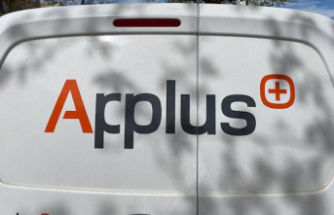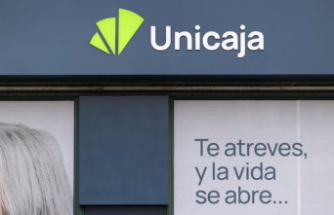The much-maligned Affordable Care Act may well be headed for the public policy scrap heap if the Trump administration has its way.
But the controversial law -- funded by a prodigious river of at least $6.7 billion in tax money -- has already fundamentally changed the health care industry. It gave free or subsidized health care coverage to nearly a half-million Oregonians. It also drove insurance companies out of business, led to painful insurance rate hikes, generated windfall profits for hospitals and undoubtedly saved lives.
Now, it's all at risk. The entire country can only wait and watch to see what the Trump administration does
While the debate gears up in Congress, here's a look at the profound changes wrought by the legislation. The Affordable Care Act in Oregon, by the numbers:
438,000
The first and most concrete impact of the Affordable Care Act was a vast expansion of Medicaid, the 52-year-old federal program that provides free health care to the poor.
Nearly a million Oregonians were enrolled in Medicaid in 2016, compared with just over 600,000 in the pre-Obamacare era.
The ranks of the uninsured plummeted from 16 to 5 percent, or about 280,000 Oregonians.
The new law liberalized qualifying standards to 133 percent of the federal poverty line. That's not much money -- $16,394 in annual salary for an individual.
State planners were stunned as the number of eligible Oregonians easily surpassed initial projections of 250,000 and eventually topped out at 438,000. In many Oregon counties, particularly the rural ones, a third of the population qualified.
So what will the Republicans do? Will they kill off the Medicaid expansion along with the rest of the Affordable Care Act?
No way, says Lynne Saxton, director of the Oregon Health Authority. Oregon just signed a waiver extension with the U.S. Centers for Medicare and Medicaid that should lock in the expansion for five years, she said. In exchange, Oregon agreed to continue to restrict the annual rate increase of delivering health care to 3.4 percent.
Saxton said Oregon provides Congress an example of health care reform that has worked.
"We've been developing a highly effective new model here with fiscal discipline," Saxton said.
"My crystal ball is, I think they'll keep the expanded Medicaid population," said Dr. Bruce Goldberg, an administrator at Oregon Health & Science University and a former state health official. "I hope they don't want to see millions of people losing coverage. But they'll decrease the funding or more subtly decrease funding by ignoring inflation. They'll give states more ability to cut coverage. I think that'll be really hard for sick people."
$6.4 billion
Increasing the Medicaid rolls by nearly 60 percent in Oregon didn't come cheap. The annual bill approached $1 billion in 2014 and surpassed $2.6 billion in 2015 and 2016.
Even before the Affordable Care Act was thrown into flux by the Republicans' triumph in November, the Medicaid expansion faced significant budget issues. After paying the full freight for the first three years, the feds now expect states to begin contributing. For Oregon, that comes to $350 million over the next two years. With the state facing a sizable budget gap, it remains to be seen how it will come up with money.
Gov. Kate Brown said Friday that health care is "too important to be treated as a political football." Her proposed $20.8 billion budget contains $55 million to further expand insurance coverage.
155,000
Donald Trump's vow to repeal the Affordable Care Act was political red meat to his conservative base. But during the presidential transition, Americans flocked in record numbers to get health insurance through the new markets created by the legislation.
In Oregon, 155,000 people signed up in 2017, an all-time high. That's more than double the 68,308 who signed up in the program's first year of 2014.
This year, as the Jan. 31 enrollment deadline approached, state officials were inundated with thousands of last-minute applicants. When the Trump administration cut off federal money for customer outreach, Oregon kicked in $110,000 to do its own advertising.
"We got 8,000 new people in the last two weeks," said Patrick Allen, director of the Oregon Department of Consumer and Business Affairs. "The bottom line is, we know the system is going to change. But in these times, it's a good idea to have health insurance."
Of course, there was an element of coercion here. The Affordable Care Act threatened to levy financial penalties against Americans who didn't sign up for health insurance -- as much as $695 per person, $2,085 per family.
In 2015 alone, 7.5 million paid about $1.5 billion in tax penalties.
While Trump and Congress may save some significant parts of the Affordable Care Act, they almost certainly will eliminate the requirement to buy insurance, industry sources agreed.
"The individual mandate is dead on arrival," Goldberg said.
But insurance executives and academics questioned whether the system would work without such a requirement. Dave Underriner, regional chief executive officer of Providence Health & Services, said there needs to be some mechanism to motivate people to sign up and stay insured. "Right now, it's the mandate," he said.
Nick Bagley, a University of Michigan Law School professor who tracks health policy, said Republicans have been slow to come up with an alternative to Obamacare because they can't figure out how to make a system work without the individual mandate.
"It takes a carrot and stick for the market to work," Bagley said. "And the Republicans hate the the stick. They really are stuck."
74 percent
To many Americans who didn't qualify for Medicaid, the Affordable Care Act has felt like a lie.
Insurers struggling to make money in the new market have repeatedly socked their customers with double-digit rate increases. People caught between premiums they can't afford and tax penalties if they don't buy insurance were understandably resentful.
Oregonians participating in the new individual market saw their rates climb an average of 27 percent in 2016. That's on the heels of an average 23 percent jump in the prior year.
Some Oregonians got hit much harder. Jon and Mary Gill, 55-year-old Hermiston residents who own and operate a pool and spa store, got word last fall that their insurance rates would increase 74 percent.
Nevertheless, Moda Health, their Portland-based insurance company, raised their rates from $846 to $1,472 a month. "That's more than double what we pay on our mortgage," Mary Gill said.
The Gills say they have no significant health issues. Neither had any surgeries or major medical procedures in 2016. They don't even take any prescription drugs.
For good measure, Moda also upped their deductible to $7,150 each a year.
Mary Gill said she appealed to Moda and the Oregon Health Division but got no satisfaction.
"It's just hard to swallow when you pay and pay, but then you have to really have to think twice before you go out and get treatment."
Moda declined comment.
Allen, the top state regulator overseeing the insurance industry, conceded the new individual market has been a difficult place for some consumers."The population really dissatisfied with the act are the healthier folks who used to be able to get insurance at a price that reflected their good health," he said. "Now, they are bearing much of the cost of insuring the rest of the folks who couldn't get health insurance at any price because they were sick and needed to use it."
$264.4 million
There's a reason insurers have gotten aggressive on rates; it was either that or go out of business, they argued.
The Affordable Care Act has been a bloodbath for many insurers, particularly those who aggressively pursued customers in the markets newly created by the act. Companies like Moda badly misjudged the new markets and significantly underpriced premiums.
Though it seems obvious now, some companies failed to take into account that many of their new customers had been shut out of the health insurance market because of pre-existing conditions. The Affordable Care Act mandated that insurers accept those customers. When they finally did get coverage, they tended to be heavy users of health care, which took a toll on some insurers' bottom lines.
Oregon insurers have cumulatively lost $264.4 million since 2014.
Moda, Oregon's second largest health insurer, suffered a near-death experience. It lost $49.5 million in 2015 and an additional $33.4 million through the first three quarters of 2016. Regulators forced the Portland company into "supervision" -- meaning all business decisions had to be cleared by the state -- early last year, citing its sustained losses and depleted capital reserves.
Moda escaped the clutches of regulators only after its parent company raised $115 million in fresh capital by selling assets and by borrowing.
At least Moda survived; other companies had to pull out of the state. Two insurance co-ops created by the Affordable Care Act failed altogether, in part because promised federal financial assistance failed to materialize.
In all, about 58,000 Oregonians were forced to find other insurance as their existing coverage disappeared.
42,438
The Affordable Care Act let loose a torrent of tax dollars so large that some are predicting a sudden repeal and cutoff of that money could shock the economy into a recession.
In a just-issued report, the Economic Policy Institute predicts Oregon could lose 42,438 jobs if Obamacare is eliminated. The economic hit would be twofold, said Josh Bivens, a co-author of the report. The nearly half-million Oregonians suddenly without free or subsidized coverage would see their buying power vastly reduced. Plus, hospitals and health systems would suffer a serious blow.
Dr. Joe Robertson, president of OHSU, agreed and went a step further. The Affordable Care Act "has been one of the major factors that helped pull this company out of the last Great Recession," he said. "That fact has been almost completely overlooked."
OHSU has for years been a state economic powerhouse. But it and just about every large hospital in the state have enjoyed unprecedented boom times as the newly insured powered a rush of new patients and charity care plummeted.
Employment at OHSU has jumped from about 12,000 before Obamacare to around 16,000 today. But Robertson has opted to slow the hiring spree given the uncertainties in Washington.
Bivens said Oregon may be exceptionally vulnerable to an Affordable Care Act recession because it receives an oversized share of the federal booty.
"One thing that really stuck out as I looked at the numbers is that Oregon gets a ton of federal money," Bivens said. "It gets a billion dollars more a year than Pennsylvania, which is three times larger. Oregon definitely looks like one of the big losers here."
-- Jeff Manning
502-294-7606, jmanning@oregonian.com
Our editors found this article on this site using Google and regenerated it for our readers.













